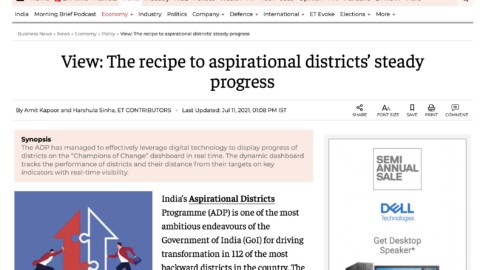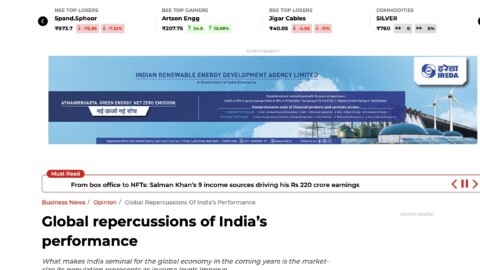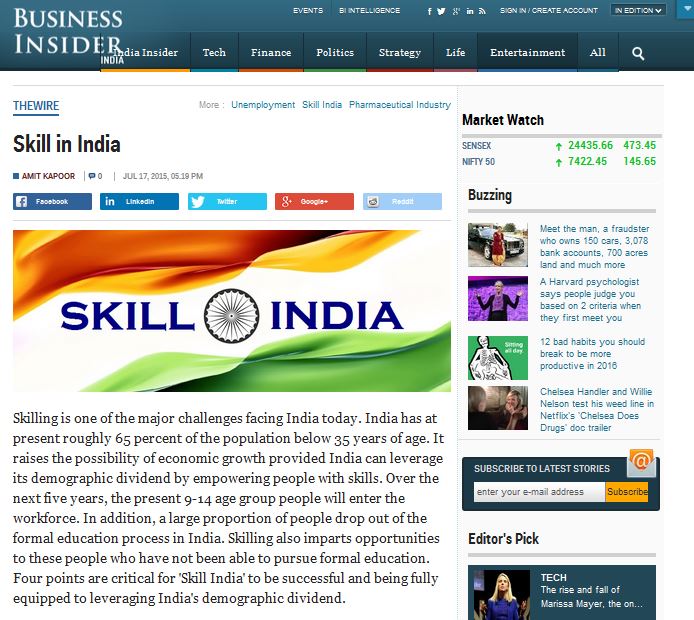Does Inequality Matter?
Inequality is an inevitable consequence of economic growth. The challenge is to ascertain the level at which society begins to perceive the distribution of resources as unfair. The issue is particularly concerning for India as the rise in inequality in the country during the last two decades has been one of the worst in the world; second only to Russia. Recent studies show that between 2000 and 2015 while on an average India grew at a rate of 4.7 per cent, the incomes of the bottom 50 per cent and the next 40 per cent of the population grew around 2 per cent per year, and the top 1 per cent grew at more than 7 per cent per year.
It must be noted that during this period, the poverty levels in the county marked a significant decline, which is inarguably a key outcome of growth. However, there needs to be a limit beyond which the concerns about growth should be coupled with how it’s getting distributed across society. This was the basis of the “Sen-Bhagwati debate” that broke out in 2013, which pit the proponents of redistribution before growth (Amartya Sen) against the proponents of growth before redistribution (Jagdish Bhagwati). As it took place during the run-up to the 2014 general elections, the debate had deeper political undertones. But this was an anomaly in India’s political sphere that remains curiously detached from the idea of inequality.
The Indian democracy might be unique on this front. While inequality has been a primary political issue in elections across the developing (Brazil) and developed (United States) countries, it has always remained on the fringes of any serious political debate in India. And while inequality could be said to have been a talking point in the 2019 general elections with political discussions revolving about income transfers to the poor, such ideas never caught the fancy of the electorate.
The US economist Albert O. Hirschman might have one argument to explain the seeming tolerance towards inequality among the Indian public. He states that inequality has different social reactions under different phases of growth. When the economy is stagnant, inequality is perceived as a zero-sum game where the economic advancement of one section of society signals towards a possible deterioration in prospects of others. On the other hand, during the periods of accelerated growth, the economic advancement of one section of the society signals the possibility of a rise in prosperity of the rest. The tolerance levels of society towards inequality during such times are typically higher.
Hirschman’s arguments can to an extent explain the tolerance of inequality among Indian voters during the high-growth years, but since 2012 the Indian economy has entered a low-growth phase. It could be the case that the advent of technology has elongated the social acceptance of inequality. The fall in prices of technology like high-speed internet and mobile phones has resulted in a few cascading effects. Firstly, it has allowed Indian consumers access to an array of e-commerce services and ride-hailing businesses (Ola and Uber), which has created multiple low-skill employment opportunities. Secondly, as these technologies have become cheaper, the purchasing power of the masses has increased despite falling incomes, adding to the sense of improving prosperity.
In case these ideas account for the prevailing sense of calm among the Indian citizens, they point to an oncoming burst of discontentment once the gains from technological advancement peak. India needs to explore avenues of high growth and job creation soon. It is time inequality is addressed effectively in Indian policy circles.
The article was published with Business World on March 28, 2020.


























